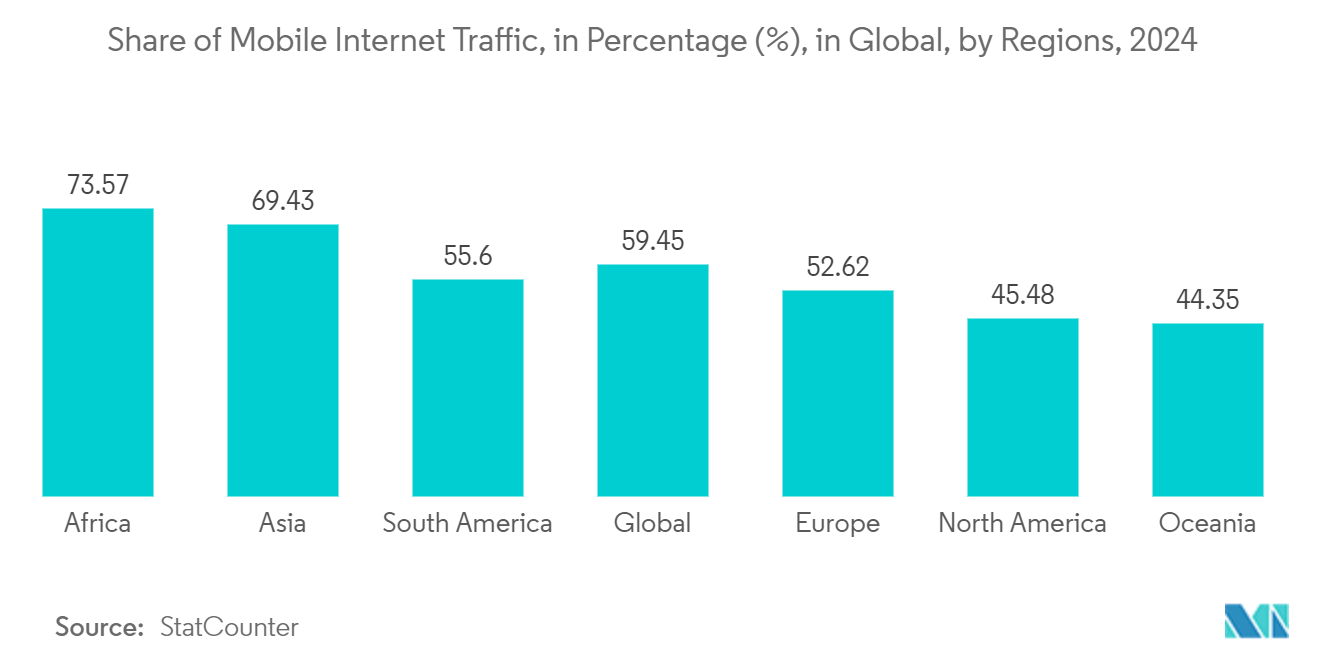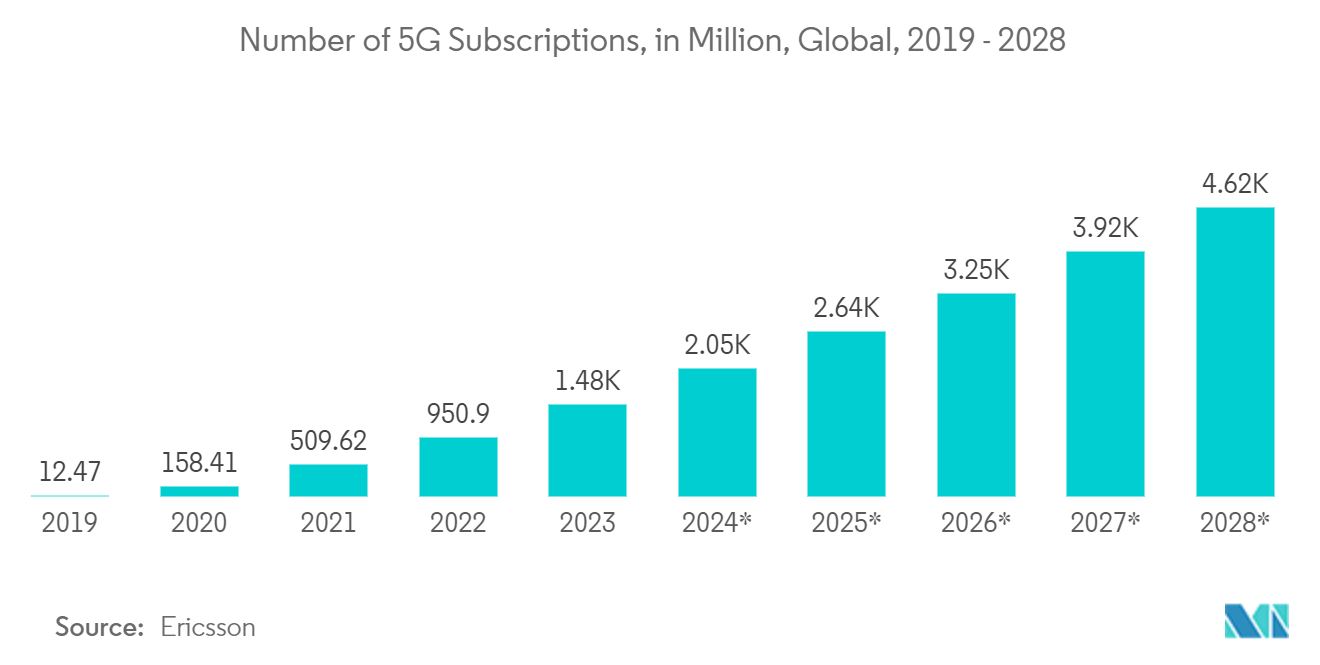Market Trends of Asia Pacific WiGig Industry
Display Devices to Drive the Market Growth
- Wireless Gigabit (WiGig) technology operates at 60GHz. It allows wireless transfer of audio and video data up to 5 gigabits per second, ten times the current maximum wireless transfer rate, at one-tenth of the cost, usually within a range of 10 meters. Due to the ease of operation and high speed, the WiGig technology market is gaining traction, especially in the gaming sector. According to StatCounter, as of January 2024, mobile devices, excluding tablets, dominated global web page views, capturing close to 60% of the market share.
- WiGig technology is also being used in broadcasting video signal transmission systems in sports stadiums and mm-wave video video signal transmission systems. The technology could also be used for beaming full HD video in real time. It could be used by notebooks and other computers to wirelessly connect virtually, all the expansion needed for a docking station, including a secondary display and storage computer.
- Further, the consumer electronics sector is boosting the WiGig market. A phone, tablet, or computer could wirelessly stream content to a high-resolution TV or another monitor in the same room. For instance, Asus's ROG Phone can use WiGig along with its display dock to wirelessly connect any phone to a big-screen TV. The TwinView dock has its 6.59-inch, 120Hz touchscreen, a second massive 5,000mAh battery, and a built-in fan.
- The display devices segment of the market is presented with ample growth opportunities, especially with the advent of virtual reality (VR)/augmented reality (AR) technologies, in the forecast period. The South Korean government has announced to invest nearly KRW 19 billion in developing augmented reality platforms over the next three years. As part of efforts to boost AR/VR platform development and engage viewers in AR/VR content, the culture ministry will create a large-scale virtual cultural venue using cloud computing and provide a wide range of content services.

South Korea to Hold Significant Market Share
- The telecommunication companies, like SK Telecom, KT, and LG Uplus, were the first to launch 5G in the world in South Korea, according to the ministry of Science and ICT. SK Telecom, had the most 5G users at 14.35 million as of April 2023, followed by KT at 9 million and LG Uplus at 6.43 million.
- Moreover, according to the IEEE Communications Society, South Korean 5G users account for over the 29.6 million users as of this March 2023 and given that number of subscribers has increased to around 500,000 per month up to now, Such high penetration and quick adoption of technology indicate the demand for high-speed data transfer, which may drive WiGig chips' demand in the country.
- Ministry of Science, ICP, and Future Planning (MSIP) in South Korea has stated that the country's semiconductor companies have made an early move by entering the 60GHz WiGig market, enabling them to gain a competitive edge in the data communication market.
- The Virtual Reality market has a significant application of WiGig chipsets. The country is also emerging as one of the emerging markets for AR/VR technologies, owing to growing government investment in the market coupled with the growing adoption of AR/VR technologies among the country's end-user industries.
- The hardware companies in the country are also making continuous product launches that support WiGig chipsets. For instance, Samsung introduced its 5G New Radio (NR) Access Unit (AU), which can be used for high-speed wireless communications with high-speed wireless communications, as seen with the latest 802.11ad Wi-Fi standard operating at 60 GHz frequency.


